In a paper published in Evolution in 1986, Curt Lively presented the results of his field experiments to understand shell dimorphism in acorn barnacles. Lively showed that the morphology of the atypical form is a developmental response that is induced by predation by a carnivorous gastropod. Thirty-one years after the paper was published I asked Curt Lively about the making of the study, his memories of field work and what we have learn since about shell dimorphism in barnacles.
Citation: Lively, C. M. (1986). Predator‐induced shell dimorphism in the acorn barnacle Chthamalus anisopoma. Evolution, 40(2), 232-242.
Date of interview: Questions send by email on 8th January 2017; responses received by email on 25th May 2017.
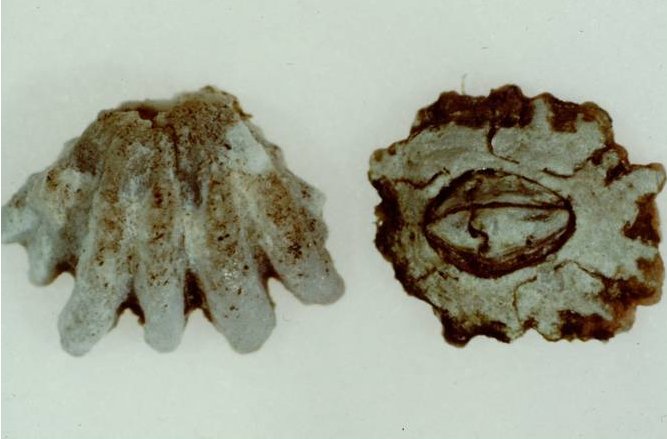
Top view of the atypical “bent” morph (left), and the typical, conical morph (right). The bent morph is induced by chemical cues from a common predatory snail that specializes on barnacle prey. The atypical form is called “bent,” because the lateral plates bend over the body of the barnacle, resulting in a reorientation of the aperture (photographer unknown)
Hari Sridhar: From looking at your publication profile I came to know that this paper formed part of your PhD thesis. Could you tell us what was the motivation behind this specific piece of work was, in relation to the rest of your PhD?
Curt Lively: I decided to attend the University of Arizona, because I wanted to work in the Sea of Cortez. The U of A had a small program in Marine Sciences that was focused on that area. While I was a first-year PhD student, I also became very interested in the maintenance of variation within populations, and the maintenance of species diversity. The barnacles were especially interesting because they filled both interests: they lived in the intertidal in the Sea of Cortez, and they were polymorphic. They were also part of a species-rich intertidal community in one of the most fascinating parts of the world.
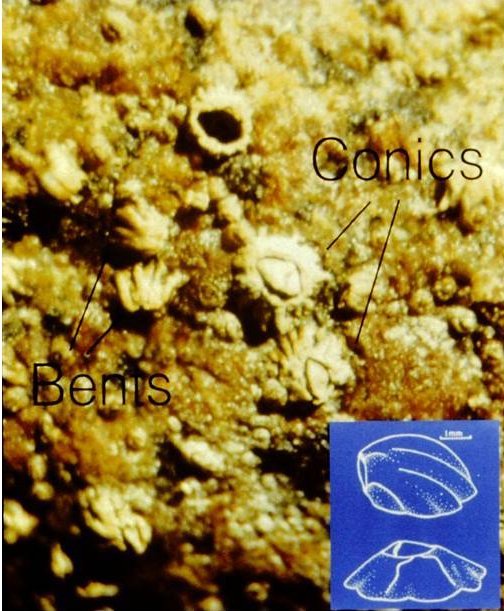
Top view of the two barnacle morphs in nature. The inset shows a side view of the two morphs, and gives a scale bar (© Curt Lively).
HS: Stepping back a little, how did you get interested in the topic of dimorphism in barnacles?
CL: The maintenance of polymorphism (in general) was, and still is, a fascinating thing. Why are there two or more morphs? Why does one morph not replace all others under the action of natural selection? The barnacles were especially interesting because there were two discrete shell types, with no intermediates, living on the same rocks within centimeters of each other. How could that be? What were the costs and benefits of each morph? There were some clues based on distributional patterns, but there was no obvious answer. This fascinated me. I spent hundreds of hours just sitting in the intertidal during low tide trying to make sense of it.
My original guess was that the two morphs were genetically determined, and that they might even be separate species. But I was wrong. Instead I found that the atypical “bent” form was induced by the presence of a specialized predator, and that it was more resistant to attack by this same predatory snail.
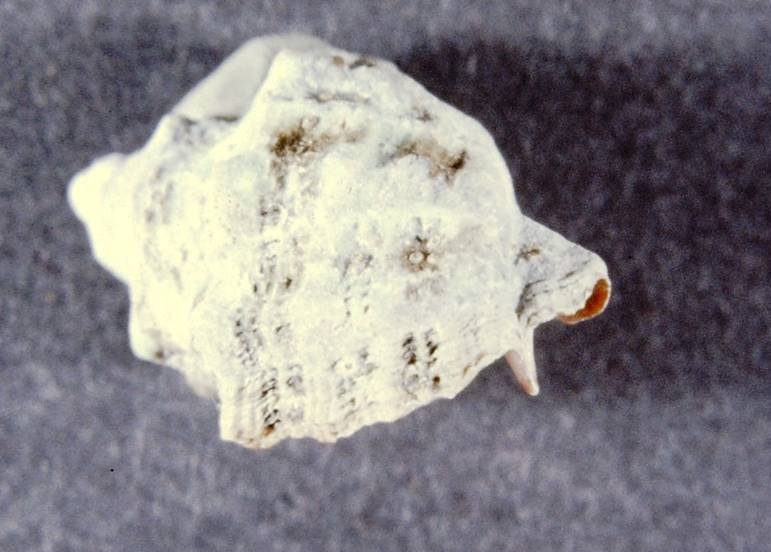
The predatory snail, Acanthina angelica. The snail uses its spine to penetrate the aperture of conical barnacles. The attack is much less successful on the bent form, because its aperture is in a plane that is perpendicular, rather than horizontal, to the substrate (© Curt Lively)
HS: If you don’t mind my asking, how come your PhD supervisor wasn’t an author on this paper?
CL: I don’t mind at all. The tradition in ecology at the time was that PhD students developed their own projects. They also applied for their own small sources of funding, which meant that their projects had to be cheap. Dissertations could be on very different organisms, and on very different questions, from those of their advisors. (For example, my advisor, John Hendrickson, worked on sea turtles.) Hence, most PhD students published solo-authored papers. This does not mean to say that our advisors were not essential. My advisor cared very deeply about his students and the quality of their work.
I have tried to maintain this tradition in my lab group. Some of my students have run independent projects as part of their dissertations. I am not a coauthor on these studies.
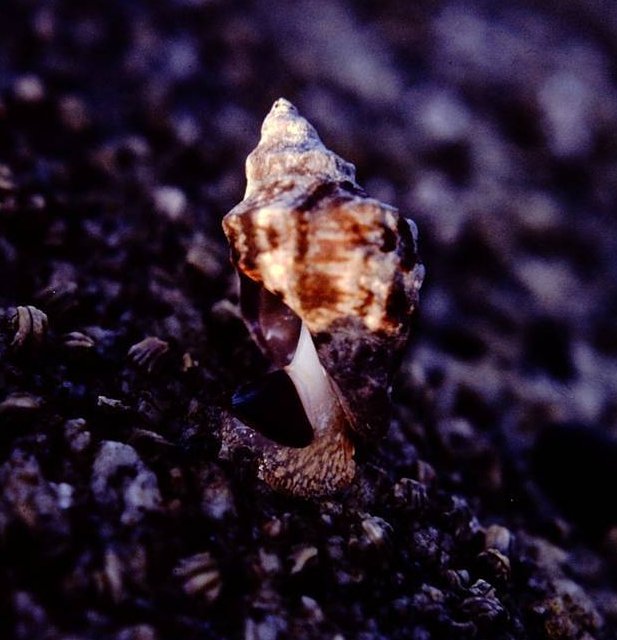
Acanthina attack on conical form. The snail locates barnacle prey with its foot. Then the spine in rammed through the barnacle’s opercular plates (© Curt Lively)
HS: How did you choose Punta Penasco and Punta Pelicano for your field experiments?
CL: They were the closest rocky intertidal zones to my base in Tucson, Arizona. They also had some interesting differences. Punta Penasco (Rocky Point) was a basalt boulder field, and Punta Pelicano (Pelican Point) was a contiguous granite reef with lots of cracks and crevices and interesting tide pools. Both sites showed somewhat similar patterns with respect to the distribution of the atypical (“bent”) morph, but there were also some interesting differences.
HS: Do you continue to work in these sites till today? When was the last time you visited this site?
CL: I have not been back to these sites. I moved to New Zealand after completing my dissertation, and started new projects. I did, however, work with Wade Hazel further south in Sonora (near San Carlos) during the summers of 1996 and 1997 on these same barnacles.
HS: In what ways do you think this site has changed since the time you worked there for this study?
CL: I have been told that they have built some ugly hotels on the beach between Pelican Point and Rocky Point, but I have not seen them.
HS: Could you give us a sense of what your daily routine was during the fieldwork for this study – where did you stay? How did you commute? Who were the people who helped you with fieldwork? Etc.
CL: I would live in Mexico for much of the summer. One summer I rented a very small cabin in Cholla Bay with Pete Raimondi. There was no running water or power. It was very hot during the day (>42 degrees C), and very humid. We would often sleep on the roof of our cabin to catch the breeze. The mosquitoes could be ferocious, so we eventually got some mosquito nets. So, a lot of what we did was just try to survive. The locals in the town would say that there are about 4 days each summer that no human can survive. I was there for those days.
As far as research, I would work the low tide in the morning and evening. At the beginning of the Spring tides, I would be on the reef by 4:30 or 5 AM, and work until the tide came in at about 10AM. I would sleep in the afternoon, and then work the low tide again in the evening. The evenings were beautiful. I would make a point to watch the sunset every night.
During the semester, I would drive from Tucson to Puerto Penasco on Thursday night, and work through the weekend. Much of the time, I slept in and worked out of my truck at Pelican Point. But there was also a house near Puerto Penasco, which we could stay at, and sometimes I would stay there. The house had power, and it was often full of interesting people, mostly marine biologists. There were many parties.
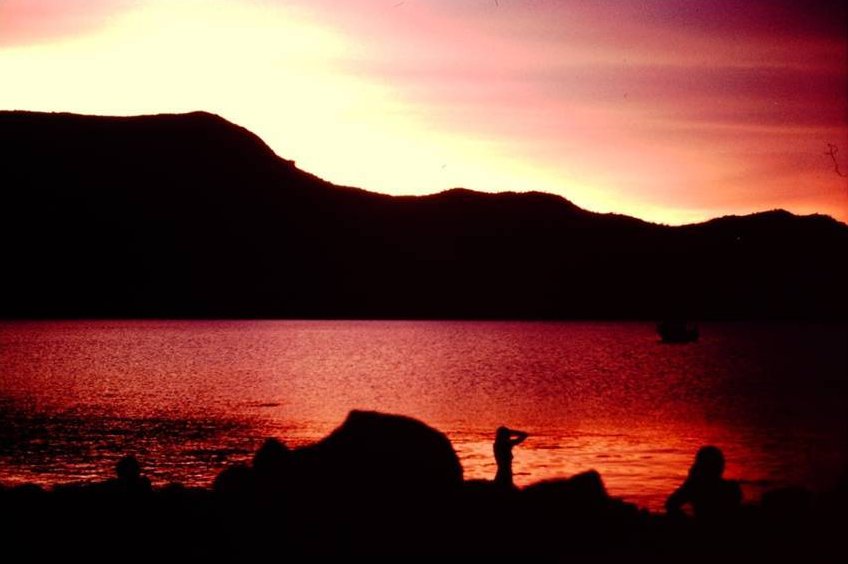
Sunset on the Sea of Cortez, also known as the Vermillion Sea (© Curt Lively)
HS: A question about the people you acknowledge – could you tell us a little more about who these people were and how they helped:
CL: Sure.
- J.R. Hendrickson. John Hendrickson was my major advisor. He was a great naturalist and teacher. He especially loved the Sea of Cortez. He was an inspiration to me.
- L. Delph. Lynda was/is a scientist. She was also my girlfriend at the time, and now she is my wife. She convinced me to be more open minded about phenotypic plasticity, and to conduct the key experiments testing for predator-induced development of the atypical form. She is now a distinguished professor at Indiana University.
- P. Raimondi. Pete was an undergraduate researcher at the time, and we did several field experiments together. He is one of the best field ecologists that I have ever met. He is now a full professor and chair of biology at the University of California, Santa Cruz. He is still doing marine ecology, but at a much more global scale.
- M. Leibold. Mathew was a fellow graduate student. We did many trips together to Mexico along with his three-legged dog, Solo. He helped me with several projects and many cases of Corona beer. He is now a full professor and super star ecologist at the University of Texas, Austin.
HS: You say “Another predatory gastropod, Morula ferruginosa, which feeds primarily on mussels (Lively and Raimondi, unpubl.)”. Was this published as a separate paper later on?
CL: Yes. That was published in 1987. (Lively, C.M. and P.T. Raimondi. 1987. Desiccation, predation, and mussel-barnacle interactions in the northern Gulf of California. Oecologia 74:304-309). It was not part of my dissertation, but it was a very fun study. Pete went on to do a PhD with the great marine ecologist, Joe Connell.
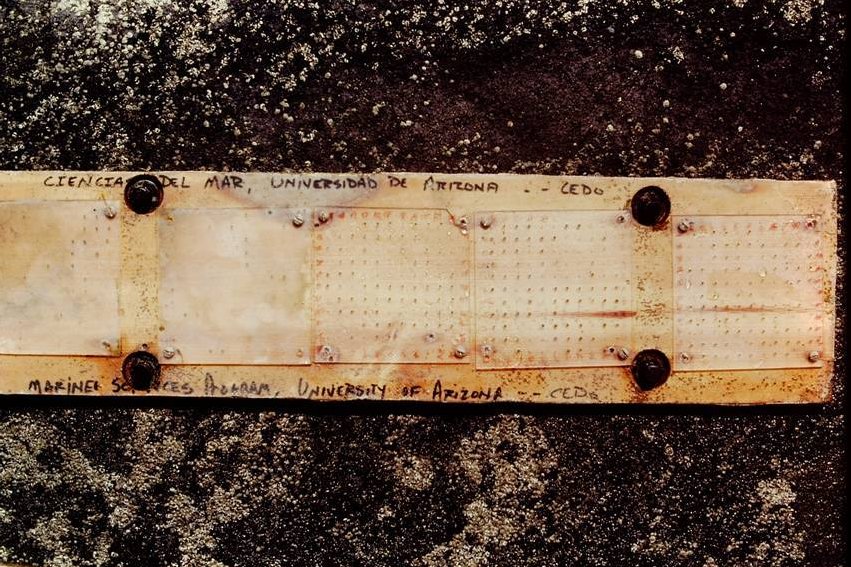
Photo of Settlement plates. “I bolted fiberglassed boards to the reef, and then attached plexiglass plates with brass screws. (My time working construction in Arizona and California came in handy.) The plates had 100 evenly spaced shallow pits drilled into the top. Barnacle larvae love shallow pits. I would then treat some plates with predator mucous to induce the bent morph. This way I could compare basic life history traits of the two morphs. Eventually, I found that the bent morph grows more slowly and is less fecund per unit size. Thus, there is a fecundity cost to developing into the bent morph. Hence, there is a trade-off between predation resistance and fecundity.” – Curt Lively (© Curt Lively)
HS: How long did the writing of this paper take, and when and where did you do most of the writing?
CL: It took forever (it seemed) to write that paper. I did most of the writing in Tucson, but I also did a substantial part of the writing in New Zealand, where I moved after I completed my dissertation. This was all before the internet, and things moved very slowly. It took nine months for the paper to be reviewed.
HS: Who made the line drawings for this paper? How were the data figures for this paper drawn?
CL: Lynda Delph did all the figures for that paper. Besides being trained as a scientist, she had been trained in graphic design and illustration. She did the figures by hand with a simple Leroy set, and they are beautiful to my eye. I have the originals on the wall in my office.
HS: Did this paper have a relatively smooth ride through peer-review? How did you decide to submit it to Evolution?
CS: Well, as I remember, one of the reviews was very negative. The gist of the review was that the study had shown that the “bent” form was environmentally cued, and therefore not genetically based, and therefore not relevant to evolution. Hence, the reviewer recommended rejection from Evolution. This was a very common view at the time. Fortunately for me, the associate editor (John Endler) rejected this review, and accepted my paper. In his correspondence to me, he indicated that he wished that he had earlier known of the work, as he would have included it in his 1986 book, Natural Selection in the Wild. I was (and still am) very grateful for his support.
HS: What kind of attention did this paper receive when it was published?
CL: Hard to say, but I think it helped change some peoples’ mind about the importance of adaptive phenotypic plasticity in natural populations.
HS: What kind of impact did this paper have on your career? How did it influence the future course of your research?
CL: I received the George Mercer Award from the Ecological Society of America for this paper, along with its companion paper, also published in 1986 in Ecology, which elucidated the costs of the atypical, bent form.
The award had a very positive effect on my career, as it is recognition of work by early-career ecologists. I would guess that this helped with my job applications. I was stunned to learn of the award.
How did it influence the course of my research? In many ways. I was convinced that I wanted to remain an experimental field ecologist, and I immediately started intertidal experiments in New Zealand after I moved there. But I eventually moved onto other questions regarding the maintenance of sexual reproduction, which lead me into freshwater ecology. But I remained primarily a field biologist.
HS: Today, 30 years after it was published, would you say that the main conclusions of this paper still hold true, more-or-less? Could you also reflect on the generality of these conclusions as borne out by subsequent research?
CL: Happily, the main conclusions still hold.
Are they general? Well, although it was not fully recognized at the time, developmental plasticity is a very important aspect of evolutionary biology. My work just happened to come at a time when there was a conversion to thinking that plasticity was not just the result of environmental noise, and that plasticity could evolve. To my mind this conversion came from a body of work, of which my study was just a small part. I am especially thinking here of Drew Harvell‘s beautiful paper on predator-induced spines in bryozoans (published in Science in 1984), and Jim Collins‘s fascinating work on density-dependent plasticity in salamanders (American Zoologist 1983) .
HS: If you were to redo this study today, what would you change?
CL: I wish that I had been more open, early on, to the idea that phenotypic plasticity is important in evolution. I was biased against it (like many others), which delayed the critical experiments.
HS: This paper has been cited close to 300 times. At the time of the study, did you anticipate that it would have such an impact? Would you know what it is mostly cited for?
CL: I had no idea that it would be cited so many times. I felt lucky just to have it published.
HS: In the paper you say “a shell dimorphism to the one studied here exists in C. fissus (Lively, pers. obs.).” Did you study the dimorphism in C. fissus subsequently?
CL: I would have liked to study C. fissus. I observed both morphs on the west coast of Baja, and similar patterns existed, but I never did the experiments. (Actually, there are three morphs there.)
HS: You say “The average probability of making this “right” choice is, therefore, likely to be greater than 0.5 – a necessary (but not sufficient) condition for evolutionary stability of developmental conversion (Lively, unpubl.)”. Was this published as a separate paper later on?
CL: Yes. It was published in the American Naturalist in 1986. (Lively, C.M. 1986. Canalization versus developmental conversion in a spatially variable environment. American Naturalist 128:561-572). One of the things that confused me about induction of the bent form is that the cue (the presence of specialized predators) seemed like a poor indicator of future risk. This is because the predators would move to different locations, meaning that they could induce the costly bent form and then depart from the local area. So, I studied the question using a game-theoretic approach. The model showed that the cue need not be a perfect indicator of future risk. Curiously, the model also showed that a developmental polymorphism could exist, so that some individuals could be induced by the cue, but other individuals could not. In other words, the developmental strategy could be both genetically based and polymorphic.
HS: Have you ever read this paper after it was published? If yes, in what context?
CL: No. I haven’t read it since it came out. I would be afraid to read it now.
HS: Would you count this paper as a favorite, among all the papers you have written?
CL: It would surely be one of them.
HS: What would you say to a student who is about to read this paper today? Would you guide his or her writing in anyway and point him or her to subsequent papers they should read along with this? Would you add any caveats?
CL: Interesting question… I think I would ask the student to try to go back in time, before sequencing and the internet. To think about funding your own research, and working out of the back of a truck, sometimes under very harsh conditions. I would ask them to think about doing ANOVAS by hand. I would ask them to try to avoid asking about mechanisms, and to focus on natural history and patterns in nature. And I would ask them to generate and compare multiple working hypotheses.

0 Comments